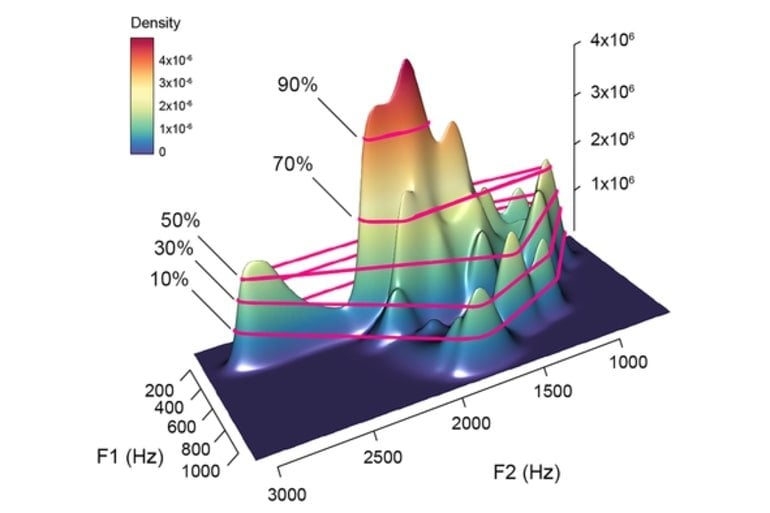Summary: Study explores the interactions between articulatory precision and gender to gauge vocal attractiveness.
Source: American Institute of Physics
What makes a voice attractive? The question is the subject of broad interest, with far-reaching implications in our personal lives, the workplace, and society.
In The Journal of the Acoustical Society of America, scientists from the University of California, Irvine and the University of Utah describe research that explores the interactions between gender and articulatory precision to gauge vocal attractiveness.
“Much received wisdom and many vocal coaches would encourage people to slow down and carefully enunciate to make a better impression on their audience,” said co-author Daniel Stehr.
“However, when it comes to empirical studies of how attractiveness of the human voice is judged, we couldn’t find previous work investigating whether an actual link exists between perceived attractiveness and overall clarity of articulation.”
Stehr and his peers were surprised to find, however, a sizable gender difference in speech intelligibility. In previous studies, people asked to transcribe recorded sentences made fewer mistakes with female talking samples.
Usually, a strong difference between genders, known as sexual dimorphism, is an indication that vocal traits can serve as relevant cues to attractiveness, a likely outcome of the forces of sexual selection. Even within genders, variability in acoustic parameters related to speech clarity make it a fertile area for vocal attractiveness research.
To gauge this variability, the researchers recorded 42 individuals performing various speech tasks and used separate pools of participants to rate vocal attractiveness of the recorded talkers.

They investigated how successfully acoustic correlates of clear speech may predict attractiveness ratings, focusing on the concept of “vowel space area” — a quantitative index of intelligibility — as a main acoustic feature.
The researchers found this feature, among others, is strongly predictive of vocal attractiveness ratings, accounting for a remarkable 73% of the variance in ratings. But these results were true only for female talkers.
The researchers conjecture the lack of relationship between male vocal attractiveness and acoustic correlates of clearly produced speech is linked to compelling yet paradoxical evolutionary hypotheses.
“From a sexual selection standpoint, males with traits that are slightly more masculine than average are typically preferred, which in this context would make males with less clear speech more attractive,” said Stehr. “At the same time, constricted vowel space area and lower perceived clarity is associated with a range of speech motor disorders, suggesting a lack of clarity may also have indicated the presence of disease to our ancestors.”
About this auditory neuroscience research news
Author: Larry Frum
Source: American Institute of Physics
Contact: Larry Frum – American Institute of Physics
Image: The image is credited to University of California, Irvine; University of Utah
Original Research: Closed access.
“Examining vocal attractiveness through articulatory working space” by Daniel Stehr et al. Journal of the Acoustical Society of America
Abstract
Examining vocal attractiveness through articulatory working space
Robust gender differences exist in the acoustic correlates of clearly articulated speech, with females, on average, producing speech that is acoustically and phonetically more distinct than that of males.
This study investigates the relationship between several acoustic correlates of clear speech and subjective ratings of vocal attractiveness. Talkers were recorded producing vowels in /bVd/ context and sentences containing the four corner vowels. Multiple measures of working vowel space were computed from continuously sampled formant trajectories and were combined with measures of speech timing known to co-vary with clear articulation.
Partial least squares regression (PLS-R) modeling was used to predict ratings of vocal attractiveness for male and female talkers based on the acoustic measures. PLS components that loaded on size and shape measures of working vowel space—including the quadrilateral vowel space area, convex hull area, and bivariate spread of formants—along with measures of speech timing were highly successful at predicting attractiveness in female talkers producing /bVd/ words.
These findings are consistent with a number of hypotheses regarding human attractiveness judgments, including the role of sexual dimorphism in mate selection, the significance of traits signalling underlying health, and perceptual fluency accounts of preferences.






